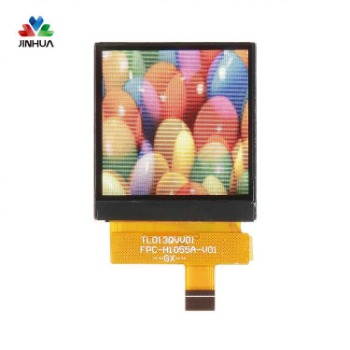أصبحت شاشات TFT LCD التي تعمل باللمس ذات شعبية متزايدة في الأجهزة التي تتراوح من الأجهزة الإلكترونية الاستهلاكية إلى المعدات الصناعية والطبية. على الرغم من أن مفهوم التصميم لاستخدام شاشات اللمس TFT ناضج جدًا، إلا أن فرق الهندسة وتصميم المنتجات غالبًا ما تواجه مشكلات يصعب حلها. إن اتباع أفضل الممارسات لاستخدام شاشة TFT LCD التي تعمل باللمس يمكن أن يوفر عليك الكثير من المواقف المزعجة.
أفضل الممارسات لتثبيت شاشة TFT LCD التي تعمل باللمس
تأكد من وجود مساحة كافية بين علبة المنتج وTFT شاشة ال سي دي.
عند تثبيت وحدة TFT LCD، تأكد من أنها لا تلتوي أو تتشوه أو تنحني.
تركيب CTP مع الحافة
يجب أن تكون نافذة الإطار أكبر من المنطقة النشطة لوحة اللمس السعوية (> 0.5 مم).
يجب تركيب حشية عازلة (0.5 ~ 1 مم) بين الإطار وسطح CTP.
للنحافة الفائقة تي اف تي ال سي دي الشاشات، يوصى بتركيب دعامة خلفية.
تركيب سطح CTP
يتم استخدام الشريط على الوجهين للصق منطقة التسوية شاشة TFT LCD.
يوصى بترك فجوة (> 0.3 مم) بين غلاف المنتج وعدسة غطاء شاشة LCD.
عند الحاجة (مثل أ شاشة تي اف تي تعمل باللمس مع عدم وجود هيكل بناء)، يجب استخدام دعامة الظهر مع الفواصل.
إذا كانت هناك حاجة إلى عدسات تغطية إضافية، فيجب على المهندسين إعادة التحقق من مواصفات CTP للمواد والسماكات المقبولة.
يلزم وجود فجوة تتراوح بين 0.2 إلى 0.3 مم بين لوحة الغطاء وسطح شاشة TFT LCD.
يجب أن تكون نافذة عدسة الغطاء أكبر من المنطقة النشطة شاشة TFT تعمل باللمس (> 0.5 مم).
تثبيت RTP
يلزم وجود فجوة تتراوح بين 0.2 إلى 0.3 مم بين الإطار وسطح شاشة اللمس TFT LCD.
يجب أن يغطي الإطار 0.5 مم (B) على الأقل من المنطقة المرئية شاشة TFT LCD لمنع المستخدمين من الضغط على منطقة اتصال فيلم RTP ITO.
يجب أن تكون هناك فجوة تتراوح بين 0.2 إلى 0.3 مم بين الجدار الجانبي للإطار والجدار الجانبي لشاشة TFT LCD.
أفضل الممارسات لتصميم التأريض
إذا لم يتم اتباع أفضل الممارسات فيما يتعلق بأجهزة التأريض المزودة بشاشات TFT تعمل باللمس، فقد تنشأ مشكلات مختلفة. التحديات الشائعة المتعلقة بالتأريض:
القدرة على مقاومة الضوضاء ضعيفة، وسيكون للتداخل تأثير سلبي على تشغيل الجهاز.
يمكن أن يؤدي الانحراف طويل الأمد، أو التغيرات في الجهد الكهربي بمرور الوقت، إلى انخفاض أداء الشاشة.
هناك اعتباران رئيسيان: إبقاء الاتصالات الأرضية قصيرة قدر الإمكان، والحفاظ على المعاوقة عند الحد الأدنى. يعد هذا المطلب بالغ الأهمية بشكل خاص في الاتصال الأرضي بين غلاف الشاشة ووحدة التحكم باللمس. قطر الوصلة الأرضية له أيضًا تأثير، على الرغم من أنه ليس بنفس أهمية الطول.
هناك اعتبار مهم آخر في تصميم التأريض وهو تجنب الحلقات الأرضية. أي أجزاء موصلة عائمة قريبة من مستشعر اللمس ستؤدي إلى عدم استقرار وظيفة اللمس. لذلك يجب أن يكون لديهم جميعًا نفس الإمكانات الأرضية التي تتمتع بها وحدة التحكم باللمس.






 English
English Deutsch
Deutsch русский
русский español
español العربية
العربية



 IPv6 دعم الشبكة
IPv6 دعم الشبكة
